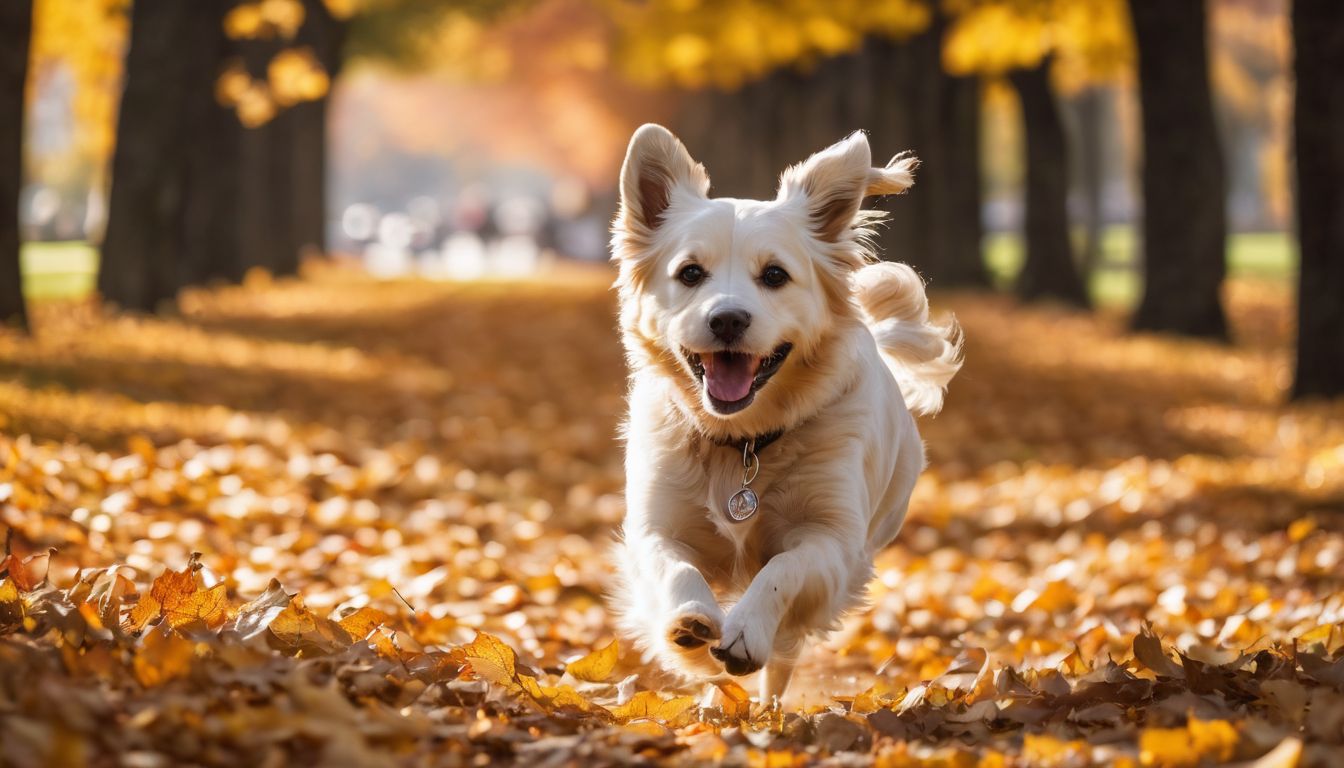Pets bring joy to our lives, but have you considered their environmental paw-print? Dogs and cats alone are responsible for up to 30% of the environmental impact from animal agriculture.
This article peels back the layers on how our furry friends affect planet Earth, guiding you towards more sustainable pet ownership practices. Discover ways to tread lightly together.
Key Takeaways
- Pets, especially cats and dogs, have a significant environmental footprint, contributing to 25-30% of the impact from animal agriculture.
- Choosing sustainable pet diets and reducing meat consumption can lessen greenhouse gas emissions and land use issues caused by pet food production.
- Responsible disposal of pet waste is crucial to avoid water contamination and minimise pollution, with biodegradable bags being an effective solution.
- The increasing rates of pet ownership intensify the demand for resources and heighten environmental concerns; hence, sustainable practices are essential.
- Educating children on eco – friendly pet care encourages responsible future generations that prioritise conservation and sustainability.
Environmental Impact of Pet Diets
Pet diets have a significant impact on the environment, with animal production contributing to greenhouse gas emissions and land use issues. Comparing different pet species’ diets can help us understand their ecological footprint.
Comparison of Animal and Crop Production
Animal and crop production have varied environmental footprints. The table below compares key factors:
| Aspect | Animal Production | Crop Production |
|---|---|---|
| Resource Use | High water, energy and land requirements for feed and livestock | Lower water and energy usage compared to livestock |
| Greenhouse Gases | Significant methane and CO2 emissions | Primarily CO2 emissions, lower methane output |
| Land Use | Extensive land needed for grazing and feed crops | Less land required per calorie of food produced |
| Biodiversity Impact | Habitat loss due to deforestation for pasture | Can have lower impact with sustainable practices |
| Waste Production | High quantities of manure can pollute ecosystems | Plant waste generally causes less environmental damage |
Choosing pets that consume less animal protein can greatly reduce environmental strain.
Contribution to Global Greenhouse Gas Emissions
Pet diets contribute significantly to global greenhouse gas emissions. The production of animal-based pet food, including meat and dairy products, has a substantial environmental impact due to the carbon emissions associated with livestock farming.
In addition, the processing and transportation of these animal-derived ingredients further add to their carbon footprint. This means that pet ownership can indirectly contribute to climate change through the demand for resource-intensive pet food.
Furthermore, the disposal of waste from both pets and their food packaging also adds to overall greenhouse gas emissions. As environmentally conscious individuals supporting conservation and environmental sustainability, it’s important to consider the ecological impact of different pet species and choose sustainable pet diets that help reduce greenhouse gas emissions.
Land Use Issues
While global greenhouse gas emissions are a significant environmental concern, land use issues also play a crucial role in the impact of pet ownership. The production of pet food requires extensive amounts of land for growing crops and raising livestock.
This puts pressure on natural habitats, leading to deforestation and loss of biodiversity. Sustainable land management practices, such as sourcing pet food from responsible and eco-friendly sources, can help reduce the negative effects on ecosystems.
Pet diets significantly contribute to land use issues through the demand for agricultural resources. The expansion of cropland and pastureland for pet food production leads to habitat destruction and threatens wildlife populations.
Waste Disposal
Considering the impact of pet ownership on waste disposal is crucial for understanding their environmental footprint. Pets generate a substantial amount of waste, including both faeces and litter from cats, dogs, and other animals.
When it comes to pet waste disposal, proper management is essential to prevent water contamination and protect ecosystems. Responsible pet owners should dispose of pet waste in designated areas or use biodegradable bags to reduce their environmental impact.
Additionally, implementing composting practices can minimise the contribution of animal waste to landfills.
The Truth about Cats and Dogs
Studies have shown that meat consumption by pets contributes significantly to their environmental impact, making it important for pet owners to consider the sustainability of their furry companions.
Read more to learn about the truth behind the environmental impact of different pet species.
Percentage of Environmental Impact Caused by Pets
Pets, particularly cats and dogs, have a substantial environmental impact. Studies reveal that the food consumption of these animal companions contributes to around 25-30% of the environmental effects associated with meat consumption.
The rearing of animals for pet food production significantly affects land use, water resources, energy utilisation, and greenhouse gas emissions.
The high meat content in pet diets directly impacts livestock farming and exacerbates habitat loss and wildlife conservation concerns. Additionally, the ecological footprint extends to waste disposal from pets.
Studies on Meat Consumption
The impact of pet diets on the environment has been extensively researched. Studies have shown that the meat consumption of pets significantly contributes to environmental degradation, particularly in terms of carbon emissions and land use.
- Research has indicated that the production of meat-based pet food contributes to a substantial portion of greenhouse gas emissions. This is due to the energy-intensive nature of meat production and processing.
- Furthermore, studies have highlighted the significant land use required for producing meat-based pet food, as it involves cultivating crops for animal feed, which leads to deforestation and habitat loss.
- The environmental impact of pet diets also extends to the sourcing and transportation of ingredients, leading to additional carbon emissions and energy consumption in the supply chain.
- As a result, there is a growing awareness of the need for more sustainable and environmentally friendly alternatives in pet food production, such as plant-based or insect-based diets for pets.
- Moreover, studies have explored the potential benefits of reducing meat consumption in pet diets not only for environmental reasons but also for animal welfare and biodiversity conservation.
Factors Affecting Environmental Impact
The type and quantity of pet food, pet waste, and pet ownership rates all play a role in the environmental impact of owning pets. To learn more about how these factors can affect the environment, read on.
Type and Quantity of Pet Food
Different types and quantities of pet food can significantly impact the environment. The choice between dry kibble, tinned food, raw diets, or homemade meals for pets directly affects the environmental footprint of pet ownership.
Furthermore, the amount of food provided to pets also plays a role in their environmental impact. Ensuring that pets receive only the necessary amount of nutrition reduces overconsumption and minimises waste, thereby contributing to sustainability efforts.
Pet owners have an opportunity to make environmentally conscious choices related to the type and quantity of pet food they provide. By selecting sustainable options and monitoring portion sizes carefully, owners can positively influence the overall carbon emissions from pet ownership as well as minimise resource consumption associated with commercial pet food production.
Pet Waste
Pet waste can significantly impact the environment if not disposed of properly. When left on the ground, pet waste can contaminate water sources and spread harmful bacteria. Additionally, it contributes to air and water pollution and poses health risks to other animals and humans.
To reduce the environmental impact of pet waste, responsible disposal methods such as picking up after pets during walks and using biodegradable bags for waste collection are essential.
Furthermore, encouraging proper waste disposal practices among pet owners is crucial for minimising the negative effects on our surroundings.
Pet Ownership Rates
Pet ownership rates significantly impact the environment. The number of pets in households directly correlates to the environmental burden associated with pet care, including their diets and waste production.
As more people become pet owners, the demand for pet food increases, leading to greater greenhouse gas emissions from animal agriculture and crop production. The quantity of pet waste also rises with higher ownership rates, contributing to land use issues and waste disposal challenges.
Thus, understanding the impact of increasing pet ownership rates is crucial for promoting sustainable practices among environmentally conscious individuals.
Rethinking Pet Ownership
Pet owners can decrease their environmental burden by considering the type and quantity of pet food they purchase, as well as responsibly managing pet waste. Educating children on sustainable practices can also play a crucial role in creating a more eco-friendly approach to pet ownership.
Decreasing Environmental Burden
- Choose sustainable pet food made from renewable resources and support eco-friendly brands that prioritise environmental responsibility.
- Reduce the carbon pawprint by minimising meat consumption, especially in cat diets, and consider alternative protein sources like plant-based options.
- Properly dispose of pet waste to prevent it from ending up in landfills or contaminating water sources, opt for biodegradable waste bags or compostable litter where possible.
- Be mindful of the environmental impact of different pet species when considering adoption, and support conservation efforts to protect endangered species affected by pet ownership.
Educating Children on Sustainable Practices
When teaching children about sustainable practices, it is essential to focus on the environmental impact of pet ownership. By incorporating lessons on responsible pet care and the importance of choosing eco-friendly pet products, children can develop a deeper understanding of their role in preserving the planet.
Encouraging them to participate in activities such as composting pet waste or using biodegradable pet supplies instills a sense of environmental responsibility from an early age.
Young individuals engrossed in learning can play a vital role in promoting sustainable practices within their families and communities. Educating children on environmentally friendly pet ownership empowers them to make informed choices that contribute positively toward conservation efforts and ecosystem services.
Conclusion
In conclusion, pet species have varying environmental impacts due to their diets and waste. Pet ownership rates also play a crucial role in the overall environmental burden. Educating individuals on sustainable practices can help decrease the impact of owning pets on the environment.
It is important for pet owners to consider the sustainability of their choices and make environmentally responsible decisions.
FAQs
1. What’s the environmental impact of owning different pets?
The environmental impact varies, with some pets requiring more energy resources and contributing to higher greenhouse gas emissions through their care and food production.
2. Does pet food production affect the environment?
Yes, producing pet food can have a significant climate impact due to the use of land, water, and energy which contributes to sustainability issues in pet ownership.
3. Are there any environmental consequences of having pets at home?
Pet owners should be aware that their furry friends do come with environmental responsibilities; for instance, some animals contribute more to greenhouse gas emissions as part of their everyday care.
4. Can I own a pet and still be environmentally responsible?
Absolutely! By considering the sustainability of your choices in pet species and caring practices you can minimize the adverse effects on our planet while enjoying your companionship with your pet.





